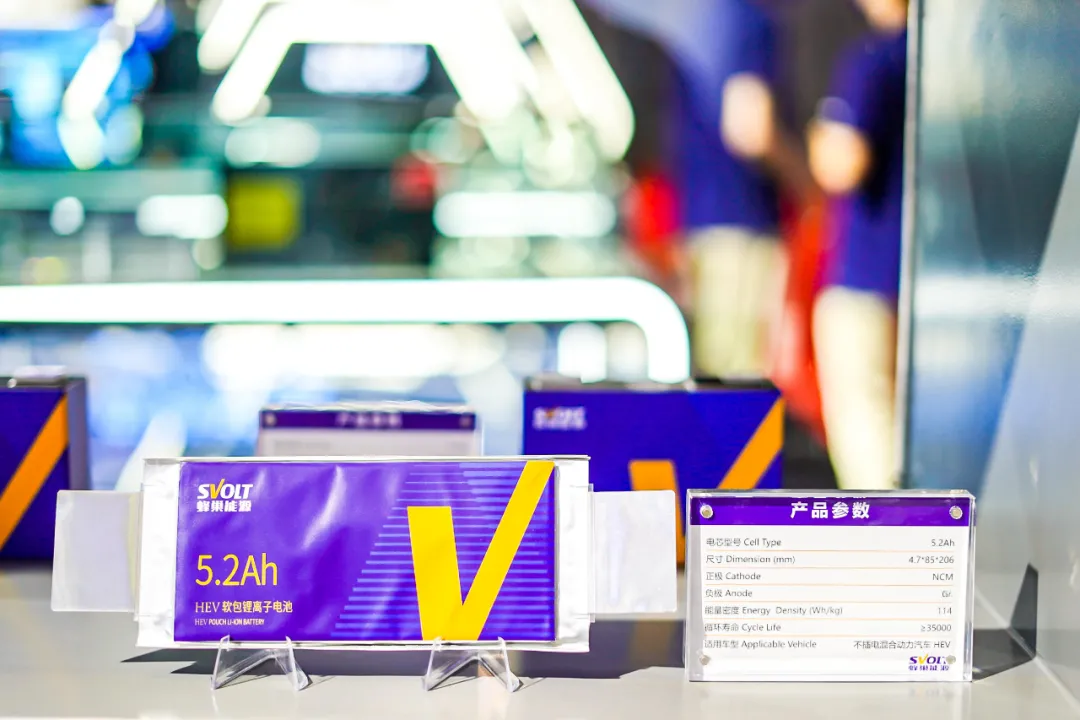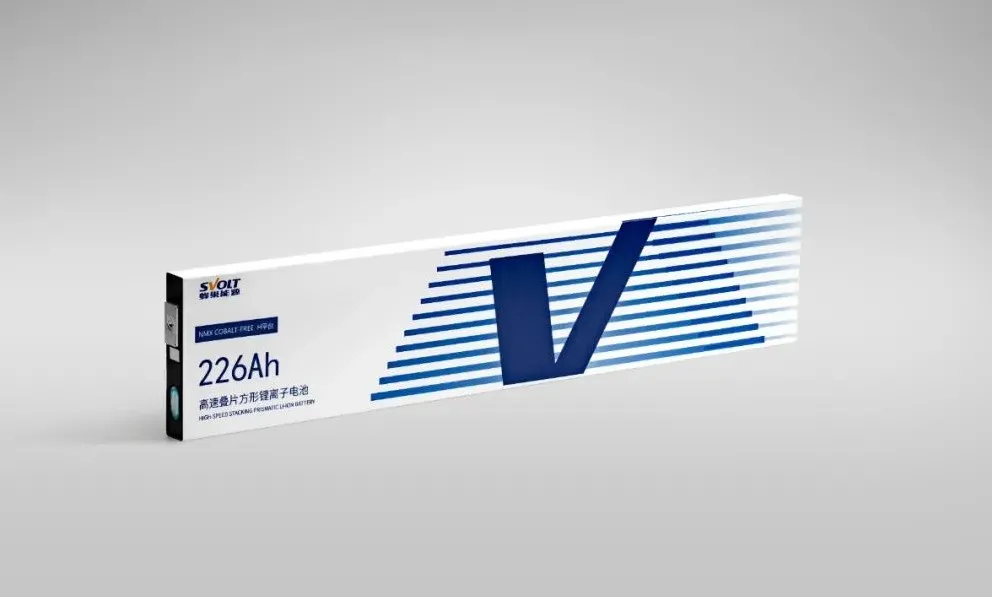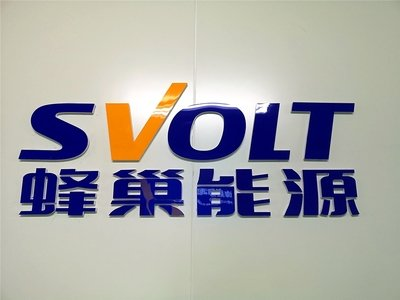The pace of expansion of high-quality power battery companies is still accelerating. The latest example is the establishment of a power battery production base by Hunan-based battery manufacturer, namely, Tigers Energy in Nanjing, with a planned investment of RMB 5.6 billion and a total production capacity of 14.6 GWh.
Apart from Tigers Energy, Ningde Times announced a production expansion plan of 184 GWh in the first four months of this year alone; AVIC Lithium Battery also announced an expansion plan of nearly 100 GWh; and BYD is building a 20GWh base in Anhui…
While companies are moving fast to expand production, their production capacity utilization rates remain low; or even when the production capacity has been achieved, the shipment volume is far from reaching the production level, which is puzzling.
Another issue that causes confusion is the technology and product pathway.
Different companies are all expanding their production, but with different technology and product pathways. There are ternary materials, lithium iron phosphate, square shells, soft bags, cylindrical shapes, customers for pure electric vehicles, hybrid vehicles, small power tools, and energy storage…
If we include the technology and product pathway that has not been put into mass production or is still in the R&D stage, the variety is even more beyond imagination: sodium-ion batteries, semi-solid-state batteries, all-solid-state batteries, and lithium-air batteries…
Amid the clamor, how can we grasp the certainty and uncertainty? What are the real issues, and what are just gimmicks?
On June 22, “Electric Vehicle Observer” went to Tigers Energy’s Changzhou factory and had a one-and-a-half-hour in-depth communication with the Chairman and CEO of Tigers Energy, Yang Hongxin, about issues such as production capacity utilization and technology pathway selection in the power battery industry.
Yang Hongxin believes that the reason for the insufficient installed capacity of the entire industry, especially high-quality power battery manufacturers, is because the vehicle manufacturers are limited by the chip shortage. Overall, the demand for lithium batteries in new energy vehicles, small transportation tools, construction machinery, energy storage power plants, and other industries is surging, so capacity expansion is still the main theme.
Regarding the technology pathway selection of power batteries in new energy vehicles, Yang Hongxin explained that Tigers Energy’s strategy is to ensure that the company can identify the right pathway through parallel development and concentrate on expanding the production of several currently commercializable and highly demanded products and technology pathways.
Continued Capacity Enhancement
The expansion of power battery companies is endless, but it seems that there are few messages on the achievement of production capacity and the formation of full-supply. How is the production capacity climbing for Tigers Energy, which is in the process of large-scale expansion?# Yang Hongxin introduced that the current production capacity of power batteries achieved by CENAT Energy is mainly in the Jintan factory in Changzhou. In May, Jintan’s output has reached nearly 0.3GWh, and it is expected to produce 1.5GWh from January to June. Moreover, the production capacity of the first and second phases of the factory is continuously increasing. The other two production lines of lithium iron phosphate in the second phase began to be produced in July, and there should be installation volume in August. “The addition of these two new production lines will further increase our production in the second half of the year,” Yang said.
Total production capacity is increasing, and production capacity utilization is not low. “Currently, the OEE of CENAT Energy is around 70%, and the goal at the end of this year is to reach 80%,” Yang said. OEE (Overall Equipment Effectiveness) refers to the comprehensive efficiency of equipment, which is used to express the ratio of actual production capacity to theoretical production capacity. It is an independent measuring tool. Yang said that the highest level of OEE in the industry is also around 80%.
Since its appearance, CENAT Energy has attracted attention by daring to use new materials and new processes. However, this inevitably raises concerns about its yield rate.
Currently, the yield rate of CENAT Energy’s battery cells is around 90%. Yang admitted that from the data perspective, the yield rate may not be high, mainly because it is lower in the field of square and soft packs than in cylindrical packs. However, the yield rates of each company differ significantly because of the different testing methods and processes used.
First, CENAT Energy has stricter definitions for yield rates and adopts more stringent geological testing to ensure product reliability.
CENAT Energy has more testing links than others. “For example, HI-POT – high-voltage testing for internal short circuit, I have one more test than other companies. Maybe other companies did not detect some small particles, but I did. This will make the yield rate appear lower,” Yang said.
Second, CENAT Energy’s standards are stricter than others. “For example, if others test with 150 volts of high voltage, CENAT Energy tests with 200 volts and 220 volts of high voltage. They may not have penetrated some small particles, but I did. This will also make my yield rate appear lower,” Yang said.
“CENAT Energy follows the standards of the vehicle level, has more links, stricter standards, and longer cycles than others, so more defective products are screened out,” Yang said. He believes that each company may have some differences, so one cannot simply look at the yield rate, but also at the company’s process standards.
In addition, setting higher standards for yield rates can be very helpful for fulfilling quality assurance commitments for future products. Many domestic power battery factories have once received large orders from whole vehicle manufacturers, but they were deducted or fined for quality assurance due to product quality issues.
Chip shortage leads to a decrease in installationAfter multiple expansions, China’s power battery industry has a large production capacity. However, production capacity does not necessarily translate into installed capacity.
In the past few years, the rapid increase in demand for electric vehicles has led to a shortage or skyrocketing prices of raw materials such as cobalt, nickel, lithium, and other materials related to power batteries, which has affected the final installed capacity. In 2021, a new factor has caused trouble: the “chip shortage” in the automotive industry has also affected the installed capacity of power batteries.
For example, in May, the production of power batteries by BJEV already reached nearly 0.3 GWh, but the installed capacity announced was less than 0.07 GWh. There was a production output of 1.5 GWh from January to June, but the installed capacity from January to May was only 0.63 GWh. Most of the uninstalled products have become inventory, but these inventories are not batteries that cannot be sold.
“There are two parts of this inventory. One part is for long-range vehicles produced by GWM ORA because, affected by chips, these products were not loaded in time. The other part is for Jinkang’s orders since the beginning of this year, because they have a very large demand for the second half of this year and next year,” said Yang Hongxin. Apart from GWM ORA and Jinkang, they also supply products to Geely and JAC, which have not yet been turned into installed capacity due to the shortage of chips or the need for stockpiling.
Yang Hongxin predicted that part of the chip problem would be alleviated in June, and the installed capacity of BJEV would be over 0.2 GWh, ranking around sixth place. When it comes to the supply situation in the later period, Yang Hongxin admitted that the biggest challenge in July would still be chips. In addition to chips for complete vehicles, there is also uncertainty in the supply of current sensor chips for battery pack distribution boxes, which affects the shipment of BJEV’s battery packs. If the chip supply is relieved, other stockpiled products should begin to reflect in the installed capacity from August onwards, further boosting BJEV’s ranking.
Power Battery Supplier-OEM Relationship
The electric vehicle industry still has a great demand for high-quality power batteries, so leading companies are continually expanding their production. BJEV’s announced factory construction plans have reached around 90 GWh this year, and the total production capacity is expected to be 200 GWh in 2025.
“At present, we have five bases under construction at the same time, and the production capacity of power batteries is still not enough when all the factories are merged,” Yang Hongxin said. This firm expansion pace stems from the demand. Yang Hongxin revealed that all output levels that BJEV can achieve before 2023 have already been ordered.
In the case of high demand and short supply for high-quality power batteries, power battery companies could still wait for a higher price. However, following the supply rule of the automotive industry, power battery companies and electric vehicle companies have a relationship where one prospers or suffers along with the other. Moreover, both parties focus on the long-term and do not seek short-term benefits, but rather a mutual and long-term beneficial partnership.On June 2nd, Great Wall Motors and CATL signed a ten-year strategic cooperation framework agreement, revealing the relationship between power battery suppliers and automakers.

It can be seen that Great Wall Motors has a huge demand for power batteries in the future. They signed a ten-year agreement with CATL, in addition to their supply from the affiliated supplier, Honeycomb Energy, to ensure sufficient power battery supply for the next decade.
For power battery companies, even strong ones like CATL, despite having many customers ranging from Tesla to SAIC-GM-Wuling, they are willing to form stable supply commitments with quality customers.
Honeycomb Energy’s role is also worth exploring. Assuming they reach the production capacity of 200GWh by 2025, and a pure electric vehicle consumes 60kWh, they can supply batteries for over 3 million vehicles. Even for a company as strong as Great Wall Motors, Honeycomb Energy’s production capacity is enough to meet their needs. However, Yang Hongxin, the CEO of CATL, mentioned that this year’s supply ratio from Great Wall Motors will be between 70% and 75%. It will drop to around 50% next year and around 40% the year after.
Regarding the reasons for reducing the share of Great Wall Motors, Yang Hongxin said that Honeycomb Energy should supply more to external customers from a company strategy perspective. Firstly, supplying to external customers is beneficial for IPO, avoiding too much proportion of related transactions. Secondly, and more importantly, it can enhance their core competitiveness and truly make Honeycomb Energy more independent. “Participating in market competition can quickly improve and reach higher levels in new technologies, product quality, and services. There will always be a problem if we only grow in a greenhouse.”
Honeycomb Energy’s external customer development is progressing smoothly. From the announcement, they have disclosed more than 10 vehicle models, including Chongqing Jinkang, Dongfeng Fengshen, and Geely; overseas, they have signed fixed-point agreements with PSA and OTOKAR, a Turkish bus manufacturer, last year. Honeycomb Energy said that they have obtained supplier orders from 25 automakers.
Technical Roadmap: Middle Nickel, Cobalt-free, and LFP
In terms of products, Honeycomb Energy is involved in ternary, LFP, square, soft pack, and cylindrical batteries.
Their Changzhou Jintan phase one factory is designed for ternary batteries, phase two is designed for cobalt-free, ternary, and LFP batteries, and phase three is a fully compatible design for cobalt-free, ternary, and LFP batteries.
Honeycomb Energy will be the first company to mass-produce cobalt-free batteries among other industry players. Yang Hongxin mentioned that their cobalt-free cathode materials have already begun mass production and they are currently undergoing PPAP (Production Part Approval Process) approval. In July, they can complete this approval, and in August, the whole electric vehicle equipped with cobalt-free batteries will debut at Chengdu Auto Show, marking the first-ever globally produced vehicle with cobalt-free batteries.

When it comes to the percentage of different technology routes, Yang Hongxin said that next year, 40% may be lithium iron phosphate, 40%-45% may be ternary battery, and the remaining 15% will be cobalt-free. In the future, the proportion of cobalt-free will continue to rise.
Fengchao Energy’s plan for lithium iron phosphate products is somewhat unexpected.
Yang Hongxin explained that the emergence of blade batteries has expanded the application scenarios of lithium iron phosphate batteries, from 300-400 kilometers to even 600 kilometers, thereby eroding a large proportion of ternary battery market share. This is because the safety of ternary batteries has always been questionable in the minds of consumers. In addition, the cost advantage of lithium iron phosphate is quite obvious, and its low-temperature performance has also been greatly improved.
Yang Hongxin believes that lithium iron phosphate will become a mainstream solution for a long time to come, and Fengchao Energy has no reason to give it up. “Our starting point is also with blade batteries, but we have chosen a length of 600mm with potentially higher product rate, straight-through rate, and climbing rate, which can adapt to a wider range of vehicles and has strong compatibility when arranged.”
Yang Hongxin said that this size of blade battery can completely replace the layout of the 590 module.
As for the ternary batteries used in many high-end markets, Yang Hongxin said that Fengchao Energy’s future focus will be on NCM613 and single crystal high voltage, which has higher energy density than Ni55 and lower cobalt content, giving it certain cost advantages.
In Yang Hongxin’s view, both NCM613 high voltage and their cobalt-free batteries can replace NCM811. Therefore, starting next year, with the mass production of Fengchao Energy’s cobalt-free batteries and NCM613 high voltage, NCM811 will gradually be replaced. It will only be used in some special projects, such as those with high requirements for fast charging performance.
How does Fengchao Energy make judgments on these technology routes and make production capacity investment decisions?
Yang Hongxin revealed two strategies: first, invest a lot of resources to do parallel development to ensure that the company can identify the route;second, focus on the mainstream. Although there are many technology routes, some of them will not become mainstream in the next five years, so focus on the main contradiction and concentrate on expanding production.
From the current product line, Fengchao Energy has executed this strategy very well, with multiple technologies developed in parallel, enabling them to provide cobalt-free, medium nickel, and lithium iron phosphate power batteries at the same time. Moreover, all three products have significant demand.Based on this, Honeycomb Energy will continue to play a strong challenger role in the power battery supply war. Yang Hongxin stated that the shipment target of Honeycomb Energy this year is still 4GWh. If this target is achieved, Honeycomb Energy will have the opportunity to break into the top five power battery suppliers in China.
This article is a translation by ChatGPT of a Chinese report from 42HOW. If you have any questions about it, please email bd@42how.com.
